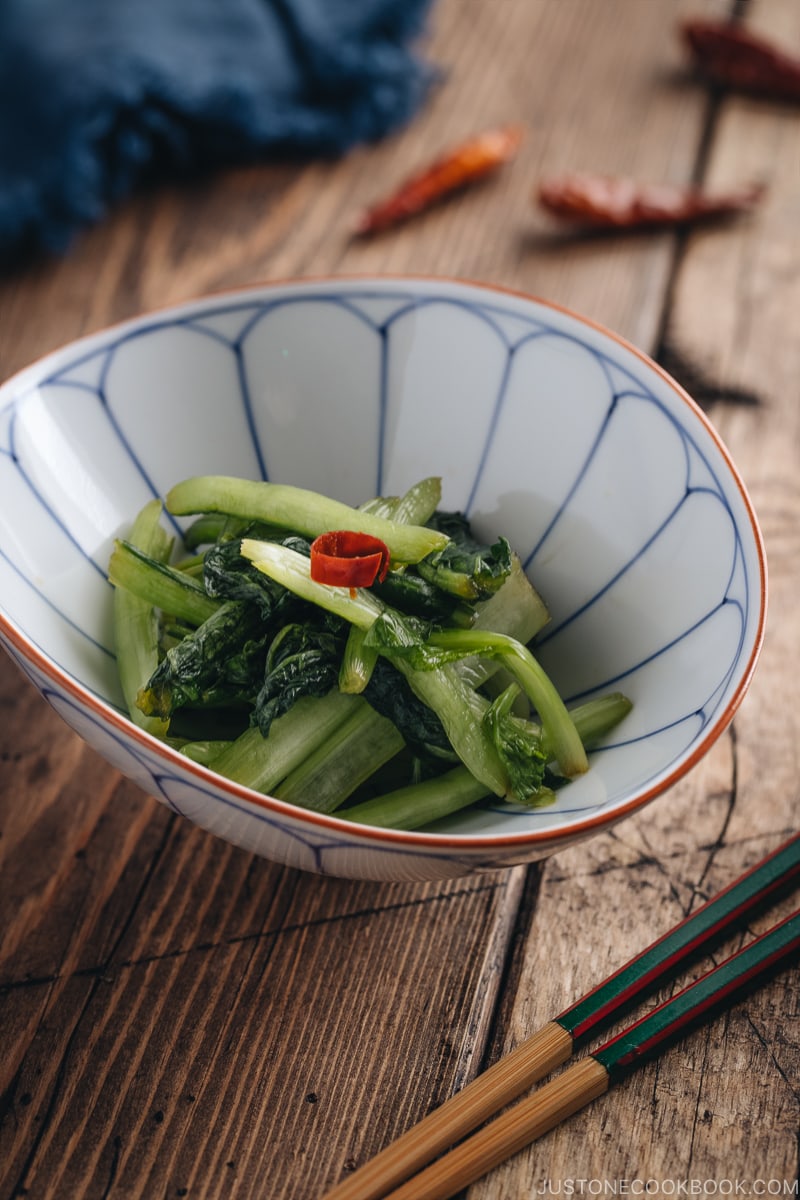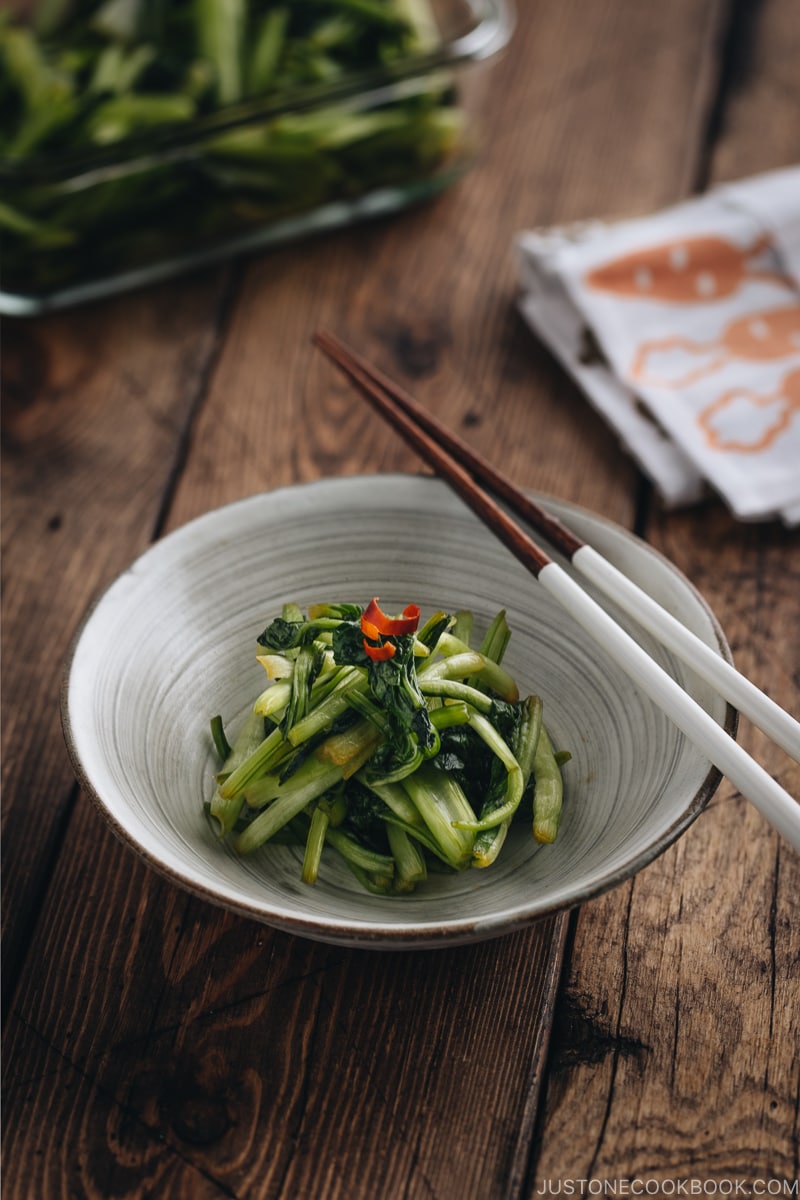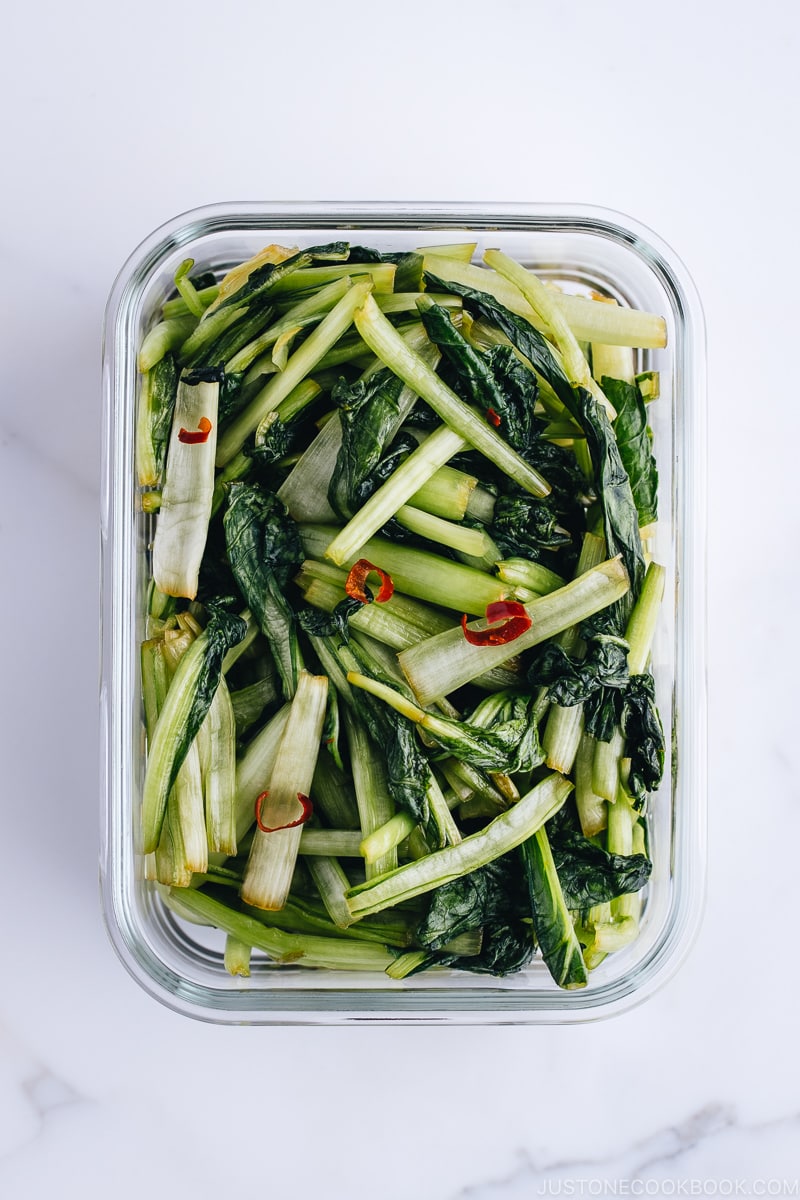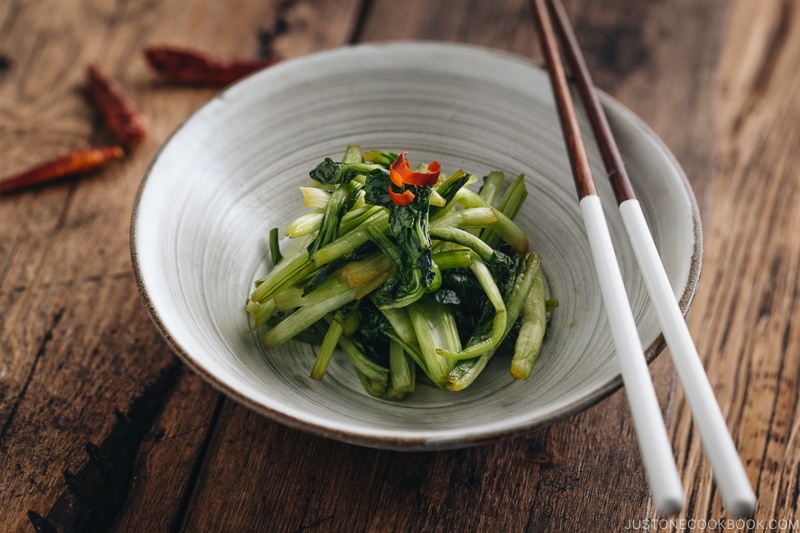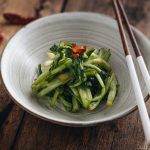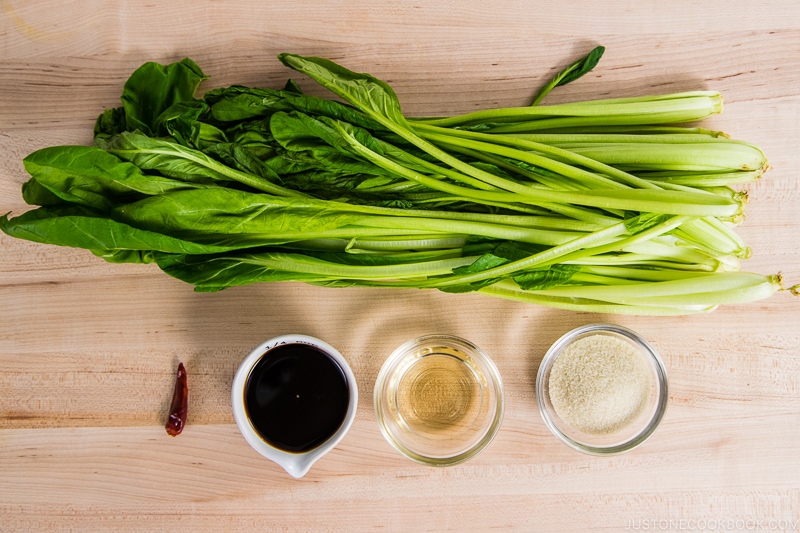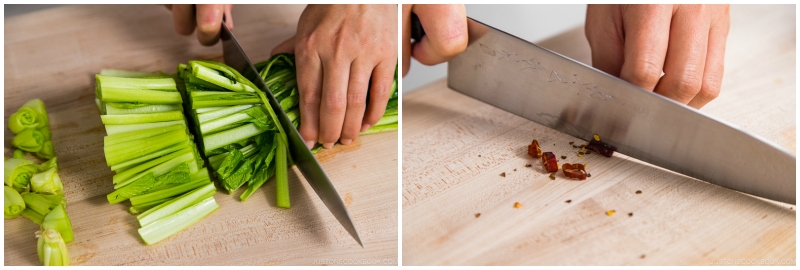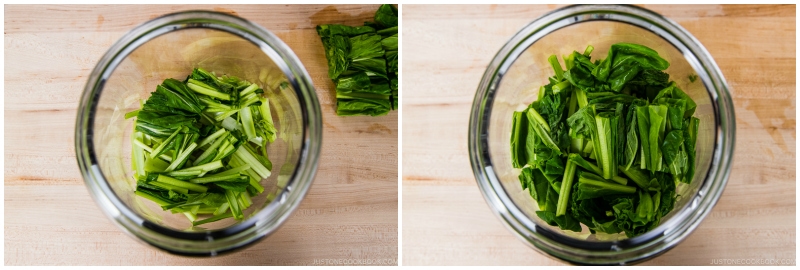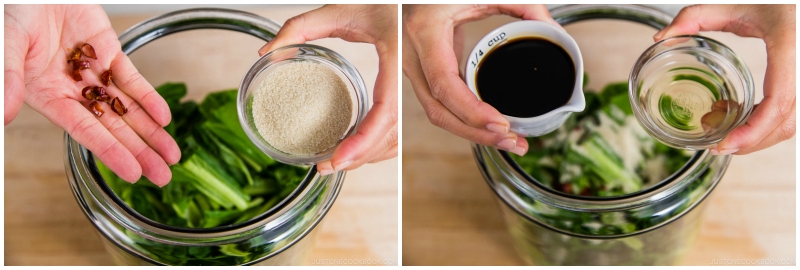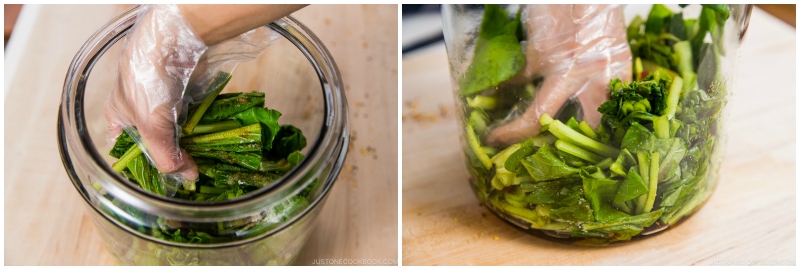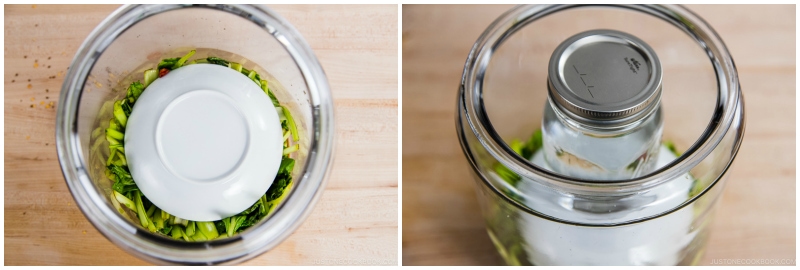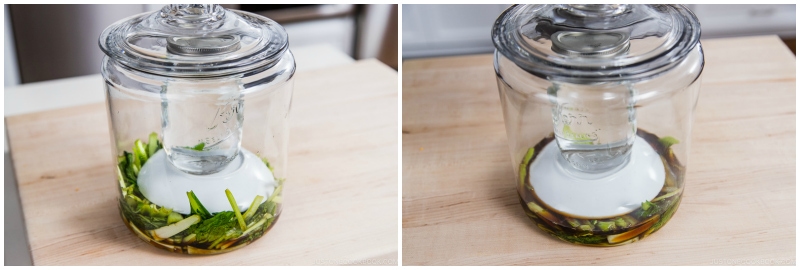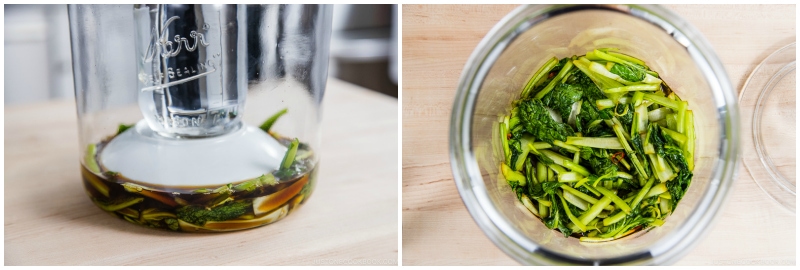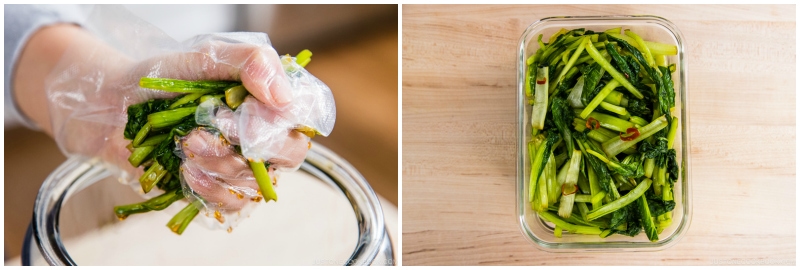Pickling may come across as a tedious undertaking for beginners, but you’ll be surprised how easy it is once you give it a try. In the world of Japanese pickles, you can start out by experimenting with one of the simplest pickling methods called shoyuzuke (醤油漬け). Shoyuzuke refers to soy sauce (shoyu) pickling (zuke). It is a very basic form of pickles in Japanese cuisine known collectively as tsukemono (漬物). For today’s recipe, I’ll show you how to pickle Japanese mustard or komatsuna for a refreshing side dish to your meal.
What is Tsukemono?
Tsukemono (漬物), or Japanese pickles, are a classic side dish in a traditional Japanese meal. Some popular ones you may be familiar with include takuan (pickled daikon), umeboshi (pickled plum), gari (pickled sushi ginger), and fukujinzuke, the Japanese curry rice condiment. Pickles are used to cleanse the palate between courses, such as pickled ginger in a sushi dinner. They help to preserve other foods, like a pickled plum tucked into a rice ball to help preserve the rice. Pickles that have a crunchy texture also provide a textural contrast to any meal. There are several types of tsukemono based on the pickling agent:
Shiozuke (塩漬け) – salt Suzuke (酢漬け) – vinegar Amazuzuke (甘酢漬け) – sugar and vinegar Misozuke (味噌漬け) – miso paste Shoyuzuke (醤油漬け) – soy sauce Kasuzuke (粕漬け) – sake kasu (sake lees) Shiokojizuke (塩麹) – rice koji/mold-cultured rice Nukazuke (糠漬け) – nuka (rice bran) Karashizuke (からし漬け) – Japanese hot mustard karashi Satozuke (砂糖漬け) – sugar
Today, let’s talk about shoyuzuke. If you’re interested in learning more about different types of tsukemono, read Tsukemono: A Guide to Japanese Pickles on my blog.
What is Shoyuzuke?
Shoyuzuke (醤油漬け) is pickling with a soy sauce-based agent. It also refers the food pickled in a soy sauce base. The basic shoyuzuke pickling agent is very easy to make. You just need to make a mixture of soy sauce, rice vinegar, and sugar. Ready in a few hours of fermenting time, shoyuzuke is a popular choice for preserving vegetables. The pickled vegetables are eaten as they are (raw) and keep for up to a week in the refrigerator.
Ingredients for Today’s Recipe
There are many vegetables and flavors you can use in your shoyuzuke. Today, I’ll demonstrate how to make shoyuzuke using komatsuna (Japanese mustard spinach) using the following ingredients:
Japanese mustard spinach (komatsuna 小松菜) – or substitute your favorite leafy green vegetable dried red chili pepper – optional soy sauce rice vinegar (unseasoned) sugar
How To Make Shoyuzuke
Variations and Substitutions
Read on to learn about the different vegetable and flavor possibilities for shoyuzuke!
Other Vegetables for Shoyuzuke
Feel free to preserve these other common vegetables using soy sauce pickling:
Japanese turnip (kabu カブ) daikon radish (Japanese radish) cucumber eggplant celery cabbage broccoli rabe root vegetables like renkon (lotus root) and gobo (burdock root)
For high-moisture vegetables, be sure to extract the excess liquid prior to pickling. This prevents mold growth and dilution of the pickling liquid. This applies to veggies with a high-water content like daikon and cucumber. Sprinkle the vegetable with salt roughly 5% of the weight of the vegetable. Leave it for 15 minutes. Quickly rinse under water and squeeze the liquid out (or pat dry with a towel).
Optional Flavor Boosters
Change up your shoyuzuke by add any of the following ingredients to your basic brine to add a boost of flavor:
red chili pepper dashi mirin grated ginger myoga ginger julienned shiso garlic sesame seeds
What To Serve with Shoyuzuke
Just like shiozuke and misozuke, shoyuzuke is definitely one of the easiest ways to enjoy vegetables. For a quick dinner, I often serve these pickled vegetables as a side with steamed rice and miso soup and I’d add a protein dish like Miso Cod or Chicken Tempura. I also love adding the pickled vegetables on Ochazuke for a quick, simple, and healthy snack.
Other Shoyuzuke Recipes You’ll Love
4 Easy Soy Sauce Pickles
Wish to learn more about Japanese cooking? Sign up for our free newsletter to receive cooking tips & recipe updates! And stay in touch with me on Facebook, Pinterest, YouTube, and Instagram.
